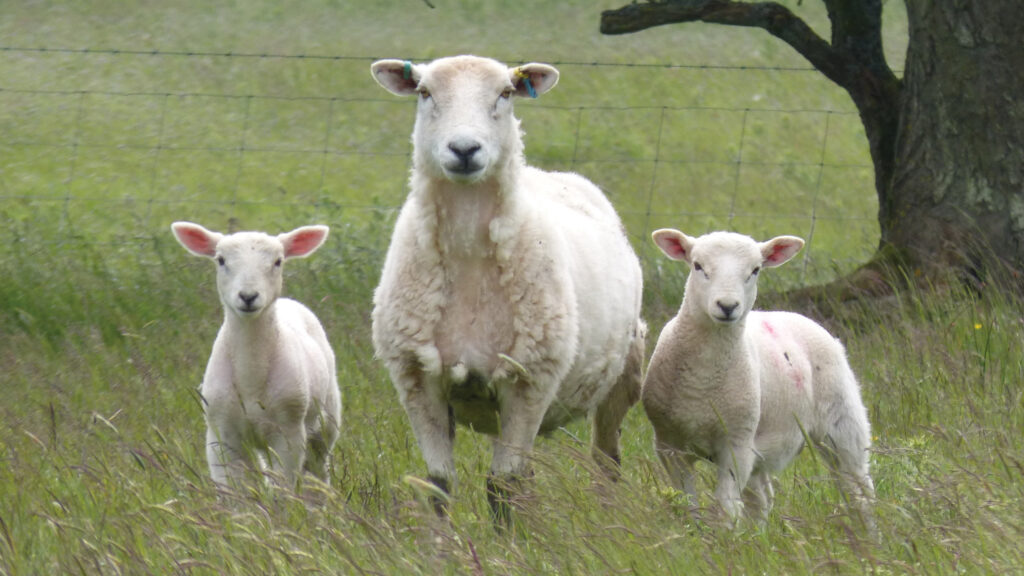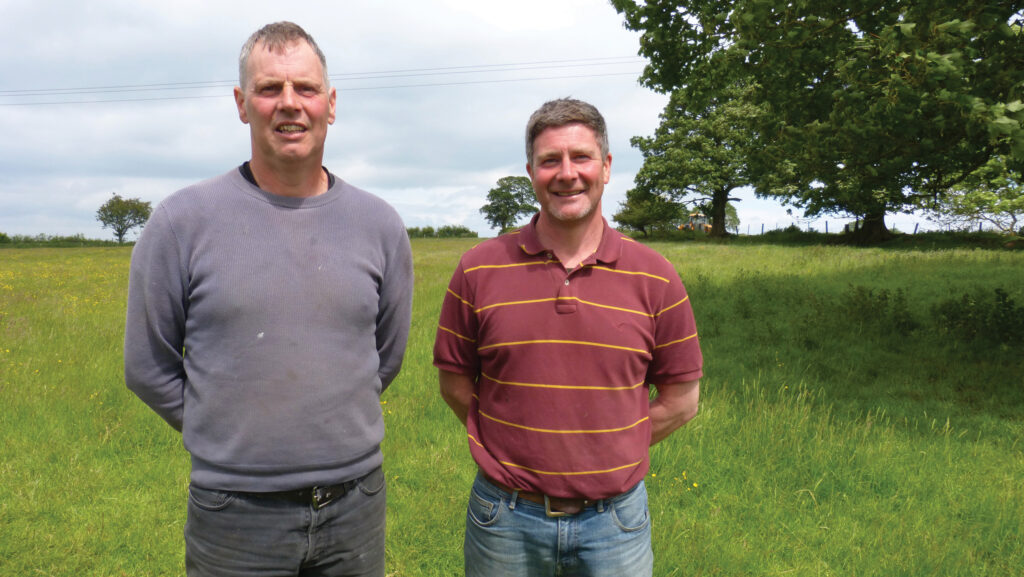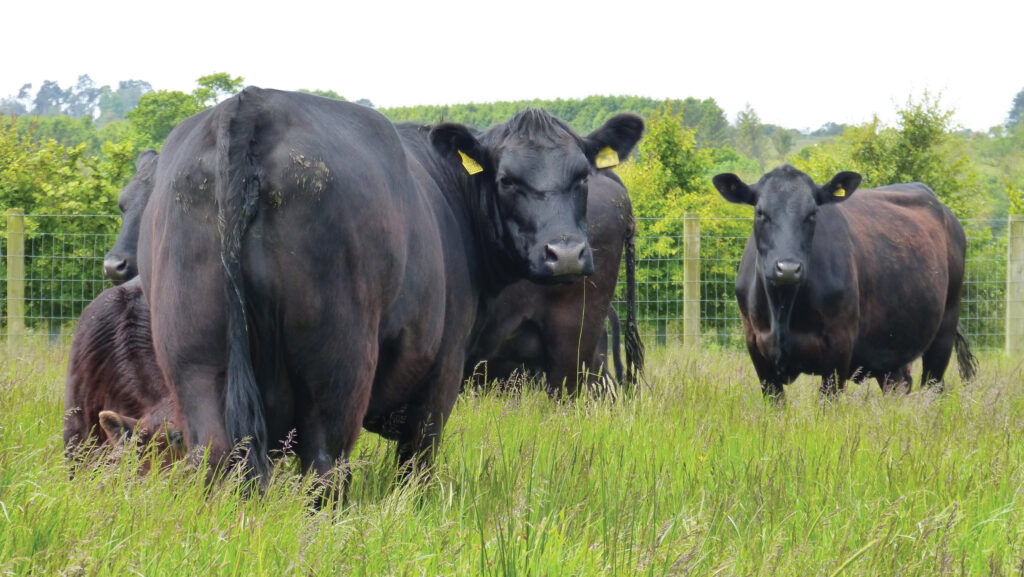Organic grassland farm seeks £73/ha profit lift with less output
 © MAG/Michael Priestley
© MAG/Michael Priestley Sheep are making way for suckler cows to minimise winter feed requirements and pay the mortgage on an organic grassland farm.
The alteration is one of several Graham and Michael Rutherford are looking at bringing in on their organic sheep, cattle and poultry business at View Law, Longhorsley, Northumberland.
See also: How Ayrshire hill farm runs sheep for £11 a ewe
While increasing suckler cows seems to contradict the wider industry trend, the Rutherfords and their business consultants believe it is a wise move. They aim to:
- Save on buying 400-500 bales of hay/silage a year, becoming self-sufficient
(saving £10,000-£12,500 at £25 a bale) - Cut costs on £20,000 worth of sheep medicines (mostly vaccines). Pasteurella and clostridial vaccines, a foot-rot vaccine and two abortion vaccines will all be up for discussion
- Cut costs on £5,000 worth of vet and med for a 53-cow suckler herd.
Farm facts: View Law, Longhorsely
- 309ha (effective) of organic grassland
- Lleyn and Easycare-cross ewes
- 53 suckler cows calved this year
- Spring outdoor lambing and calving
- Two farms farmed in a family partnership
- 12,000 organic, free-range layers
- Lambs sold store or finished for Dunbia
- Cattle finished and sold to Dovecote Park
- Family labour and one farm hand comes one day a week
Consultancy help
Graham and Michael have run an increasingly lean business since taking on a mortgage in 2010 for the neighbouring Blackpool Farm, where they erected a poultry shed in 2016 to diversify income.
The brothers have sold their pickups, as well as a tractor, a combine and four implements after discontinuing a small arable and pig enterprise.
Last year, they made £14.90 a ewe on their outdoor lambing flock and £129/ha on the beef and sheep after all costs (before subsidy). Net profit is 52% of output from a 72% gross margin.

Graham (left) and Michael (right) Rutherford © MAG/Michael Priestley
Higher interest rates mean more profit is needed. But with the cost base being low and no “easy wins”, the Rutherfords have called on the services of Nethergill Associates.
The firm is known for its radical approach to cost analysis, which sees a farm’s maximum sustainable output (MSO) calculated (see “What is maximum sustainable output?”.)
Nethergill consultant Chris Clark says the farm was producing too many lambs and needed a more sustainable balance of cattle and sheep numbers. He recommended lifting the cattle proportion from 11% to 26%.
Chris reviewed the accounts and estimated the farm was overproducing by almost £35,000, with £58,000 of extra costs. He suggested an extra £22,557 profit (£73/ha) was possible.
“Being organic, we feel this approach suits our outlook,” says Graham. “Cutting out vaccines may seem radical, but we are left with difficult decisions like this.
“Having fewer sheep should reduce disease pressure. We will discuss a sensible approach with our vets.”
What is maximum sustainable output?
Maximum sustainable output (MSO) is a farm’s maximum profitability – not maximum output – and defined by characterising variable costs in two ways:
- Productive variable costs (PVC) Associated with working with nature, by maximising the solar energy. This includes essential vet and med, harvesting, contracting, lime and so on.
- Corrective variable costs (CVC) Items bought by farmers as a substitute for nature and that use industrial energy – fertiliser, purchased concentrate, non-essential vet and med.
The theory works on laws of thermodynamics, and the principle that all energy derives from solar energy (1,36kW of power for every square metre), which is converted into food energy by plants and ruminants.
When energy is converted by humans into electricity or fertiliser, or into diesel for moving a tractor, for example, it is inefficient.
By working with nature, a farm has an advantage over most industries as it can capitalise on “free issue” resources like sunlight, soil and biodiversity.
Labour costs
Labour costs are allocated under three separate headings:
- PVCs – labour associated with managing the grass and moving livestock
- CVCs – labour associated with growing cereals for animal feed or moving livestock to wintering protocols.
- Fixed costs – for example, this would be the labour associated with fencing or repairs and maintenance.
Source: Nethergill Associates
System changes
Graham and Michael produced 3,100 lambs from 1,950 ewes last year, but are part way through reducing numbers.
The end plan is to have 1,600 ewes producing 2,400 lambs and 90 cows across both farms, losing £57,750 worth of income (based on last year’s store price of £82.50 and 150% sold rate).
However, this will be replaced by £100,000 of income from 90 cows in stores and finished cattle.
Weaned calves are budgeted to be worth £750 at the end of their first year, and their second summer will hopefully add £500 of value to them before their second winter.
Historically, sheep numbers on both farms have been higher, peaking at 2,100-head in total.
At this scale, several hundred require housing for three months to ensure grass is available in lambing paddocks.
As sheep numbers have fallen, a small suckler herd has grown at Blackpool since Michael bought 15 bulling heifers in 2021.
Since then, he has cut the flock from 900 to 750-head, meaning all the ewes can be all-grass wintered if the 53 cows (plus followers) are wintered inside.
Graham all-grass wintered 800 ewes at View Law and housed 400 ewes after Christmas. But he hopes having a smaller flock will make way for a herd of about 40 cows.
He slaughtered 136 ewe lambs this spring from his usual 300 replacements for his 1,200 sheep.
This raised the cash to buy 15 bulling heifers and will mean about 1,050 ewes are put to the tup this time, with about 800 ewes being the eventual aim.

© MAG/Michael Priestley
Wintering system
By housing the cows, Graham and Michael believe they can keep all their sheep outside all winter, moving the cost of bought-in straw from the sheep to the cows, and hopefully being better off overall by not buying in hay or silage.
“We are fans of bale grazing,” explains Michael. “It is under consideration, but most years we feel outwintering cows on our heavy clay soils may mean having to reseed grass.
“We want to avoid this as it’s a cost, it takes up fields for outwintering and reseeding is not always guaranteed in an organic system.”
Moving away from an arable and winter finishing crop rotation has saved on ploughing and cultivations.
A 150-day winter for the 620kg suckler cows with their calves weaned in the spring would require up to 75t of straw, which at £80/t would be £6,000.
Instead, cows will be bedded inside with feed access in an outdoor yard, keeping the bedding cleaner and controlling straw use.
“We see the muck spreader as another cost, but have it for the hen muck anyway.
“We compost the muck for a year, and it’s great for the land, so hopefully that is a further advantage,” says Graham.
“We will continue talking with Nethergill about how far the sheep numbers should go.
“But if output is to fall, we must cut costs substantially to end up better off.”
